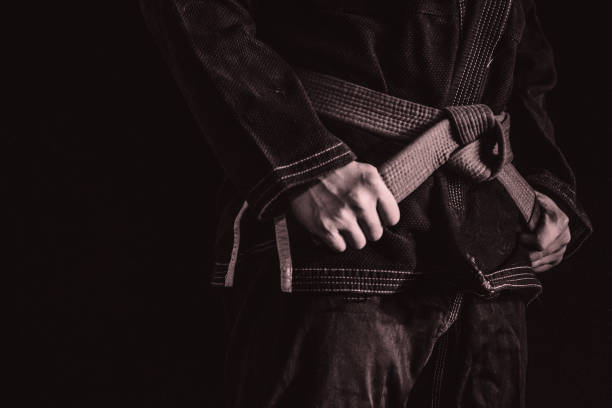The ever-growing popularity of Brazilian Jiu-Jitsu has attracted thousands worldwide to train, compete, and dedicate their lifestyle to the sport. However, has this popularity led to Jiu-jitsu becoming more or less accessible to the common competitor?
The Rise of Brazilian Jiu Jitsu
During the early 1990s, Brazilian Jiu-Jitsu was introduced to a mass audience through the Gracie family’s efforts to bring awareness to the sport. The birth of UFC and Pride played an integral role in showcasing how effective BJJ can be in the most violent situations. Perhaps the most well-known fighter and pioneer for BJJ is Royce Gracie. In 1993, Gracie faced off against Ken Shamrock at UFC 1 and submitted him in 57 seconds of the very first round. UFC 1 was broadcast via PPV, allowing fans worldwide to witness BJJ on the main stage. It showed how effective Jiu-Jitsu could be, irrespective of your size and stature. Gracie went on to win three consecutive UFC tournaments using his elite-level skills, which helped kickstart the prominence of Brazilian Jiu-Jitsu as we know it today.
Why Is BJJ So Popular?
BJJ attracts millions worldwide. In the USA alone, the BJJ industry is worth approximately 2 billion dollars. So, what makes the sport so popular.
Self Defence
- Self-protection is one of the most popular reasons why the average person may start BJJ. It teaches you how to protect yourself in difficult situations. It provides people with security, knowing that they can control another individual and keep themselves safe in violent encounters. Self-defence is what helps bring BJJ from a niche martial art to a mainstream sport. There are no barriers for entry.
Lifelong Learning
- BJJ is perhaps the most accommodating martial art in relation to lifelong learning. Individuals as young as 4, all the way up to 60+, can benefit from BJJ training, no matter the intensity. New techniques are introduced every day that make it an ever-growing and ever-lasting martial art. The vast depth of knowledge required to excel in BJJ often leads to it becoming a lifelong sport for most, but even when you feel that you’ve learned it all, there’s still more to learn.
It is a Lifestyle
- Many who train in BJJ will find that it has become a lifestyle. In many ways, it has to become this way. The dedication it takes to train consistently in a physically and mentally demanding sport eventually leads to lifestyle changes which accommodate such training. BJJ principles can also be applied directly to life. Principles such as using the technique over strength, seizing opportunities, and remaining calm can help individuals with problem-solving in general life.
Sense of Community
- On the outside, looking in, BJJ may appear to be an individual sport. However, it’s quite to opposite. In order to train, you must have at least one training partner, which immediately brings people together. BJJ is a community which encourages individuals to support rather than go against each other. Being part of a gym gives people a sense of community and belonging, especially when competing. This type of team work can translate to the outside of the gym leading to long-lasting friendships.
The Cost of BJJ
Getting Started
BJJ can be practised just about anywhere. With a willing partner, all you need is a mat and an open space. However, to improve and excel in the sport it’s going to cost you. For a beginner to start training BJJ, all they may need to pay is tuition fees. Many begin learning in shorts and a t-shirt before purchasing expensive rash guards and training gear. The average cost of gym memberships in the UK is around £30-£50 a month. So, as a beginner, with no BJJ-specific gear, it’ll cost you around £480 a year to train as a minimum. However, to excel in the sport and be promoted, you must have a Gi belt and compete in tournaments.
Competing
The average cost for a competition Gi is around £80-£100. You may compete without a Gi in rash guards only in the Nogi section of tournaments. However, this may stunt promotion if you exclusively compete in Nogi. Rash guards come at their own cost. They can also range up to £100 for a full set. Once you’re ready to compete, you must decide how many divisions to enter. For example, if you entered two divisions per tournament (Gi and Nogi), it would cost you around £80. With this, you can also enter an “absolute division”, which is an open-weight category for an extra £20. If you’re lucky enough to live locally when a tournament is taking place, travel fees are low. However, living outside of cities can cost you in travel.
The Average Year for a BJJ Competitor
For an average competitor starting BJJ, taking training gear/ gym fees into account, if you were to compete in two classes three times a year, it would cost you around £1,000. This sits at the lower end of the spectrum, assuming only one rash guard is purchased and excluding travel fees to competitions. Of course, like most things, there are ways to save money in BJJ. Cash prizes are available in some competitions, which can help with fees. End-of-season sales can help reduce the cost of training gear also. However, with demand becoming higher as the sport continues to grow, organisations are provided with the opportunity to meet this demand at a cost.
Let us know your thoughts, do you think BJJ is becoming a “rich man’s sport”?
Featured image credits to Embed from Getty Images
















